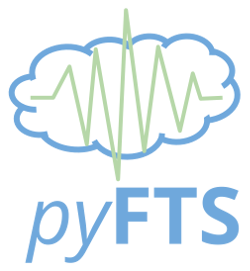pyFTS.partitioners package¶
Module contents¶
Module for pyFTS Universe of Discourse partitioners.
Submodules¶
pyFTS.partitioners.partitioner module¶
-
class
pyFTS.partitioners.partitioner.Partitioner(**kwargs)[source]¶ Bases:
objectUniverse of Discourse partitioner. Split data on several fuzzy sets
-
build(data)[source]¶ Perform the partitioning of the Universe of Discourse
Parameters: data – training data Returns:
-
extractor= None¶ Anonymous function used to extract a single primitive type from an object instance
-
get_name(counter)[source]¶ Find the name of the fuzzy set given its counter id.
Parameters: counter – The number of the fuzzy set Returns: String
-
lower_set()[source]¶ Return the fuzzy set on lower bound of the universe of discourse.
Returns: Fuzzy Set
-
membership_function= None¶ Fuzzy membership function (pyFTS.common.Membership)
-
name= None¶ partitioner name
-
partitions= None¶ The number of universe of discourse partitions, i.e., the number of fuzzy sets that will be created
-
plot(ax, rounding=0)[source]¶ Plot the partitioning using the Matplotlib axis ax
Parameters: ax – Matplotlib axis
-
plot_set(ax, s)[source]¶ Plot an isolate fuzzy set on Matplotlib axis
Parameters: - ax – Matplotlib axis
- s – Fuzzy Set
-
prefix= None¶ prefix of auto generated partition names
-
setnames= None¶ list of partitions names. If None is given the partitions will be auto named with prefix
-
transformation= None¶ data transformation to be applied on data
-
type= None¶ The type of fuzzy sets that are generated by this partitioner
-
upper_set()[source]¶ Return the fuzzy set on upper bound of the universe of discourse.
Returns: Fuzzy Set
-
variable= None¶ In a multivariate context, the variable that contains this partitioner
-
pyFTS.partitioners.CMeans module¶
pyFTS.partitioners.Entropy module¶
C. H. Cheng, R. J. Chang, and C. A. Yeh, “Entropy-based and trapezoidal fuzzification-based fuzzy time series approach for forecasting IT project cost,” Technol. Forecast. Social Change, vol. 73, no. 5, pp. 524–542, Jun. 2006.
-
class
pyFTS.partitioners.Entropy.EntropyPartitioner(**kwargs)[source]¶ Bases:
pyFTS.partitioners.partitioner.PartitionerHuarng Entropy Partitioner
pyFTS.partitioners.FCM module¶
S. T. Li, Y. C. Cheng, and S. Y. Lin, “A FCM-based deterministic forecasting model for fuzzy time series,” Comput. Math. Appl., vol. 56, no. 12, pp. 3052–3063, Dec. 2008. DOI: 10.1016/j.camwa.2008.07.033.
pyFTS.partitioners.Grid module¶
Even Length Grid Partitioner
-
class
pyFTS.partitioners.Grid.GridPartitioner(**kwargs)[source]¶ Bases:
pyFTS.partitioners.partitioner.PartitionerEven Length Grid Partitioner
pyFTS.partitioners.Huarng module¶
K. H. Huarng, “Effective lengths of intervals to improve forecasting in fuzzy time series,” Fuzzy Sets Syst., vol. 123, no. 3, pp. 387–394, Nov. 2001.
-
class
pyFTS.partitioners.Huarng.HuarngPartitioner(**kwargs)[source]¶ Bases:
pyFTS.partitioners.partitioner.PartitionerHuarng Empirical Partitioner
pyFTS.partitioners.Singleton module¶
Even Length Grid Partitioner
-
class
pyFTS.partitioners.Singleton.SingletonPartitioner(**kwargs)[source]¶ Bases:
pyFTS.partitioners.partitioner.PartitionerSingleton Partitioner
pyFTS.partitioners.Util module¶
Facility methods for pyFTS partitioners module
-
pyFTS.partitioners.Util.explore_partitioners(data, npart, methods=None, mf=None, transformation=None, size=[12, 10], save=False, file=None)[source]¶ Create partitioners for the mf membership functions and npart partitions and show the partitioning images. :data: Time series data :npart: Maximum number of partitions of the universe of discourse :methods: A list with the partitioning methods to be used :mf: A list with the membership functions to be used :transformation: a transformation to be used in partitioner :size: list, the size of the output image [width, height] :save: boolean, if the image will be saved on disk :file: string, the file path to save the image :return: the list of the built partitioners
